By Agha Iqrar Haroon
I had no idea that there are two places instead of one in Baku city of Azerbaijan which have direct historical linkages with Pakistani city of Multan.
I thought there is (was) only one place—-known as Multani Caravanserai (Dwelling place of people from Multan—a city of present Pakistan). I had been there several times which is situated opposite Bukhara Caravanserai in old city of Baku.

I was informed by a Nepali journalist about a Fire Place of Hindus in Baku. She told me this during our meeting in Kathmandu Nepal in first week of February this year. Our host introduced myself not as an Editor from Pakistan rather an avid traveler having special interest in Central Asia and Eastern Europe regines.
During our conversation, she asked me if I had ever been to (Ateshgah of Baku) Aitishgah in Baku? My answer in negation was an apparent disappointment for her. I told her that I had been at Multani Caravanserai (Multan Caravanserai) but had no idea of this Fire Place and had never heard of this Aatishgah.
My answer was enough to encourage her to explain what is this Aatishgah. I thanked her for introducing me to this very important historic place in Baku. I decided then and there that I would travel to Baku again just to visit Aitishgah.
On May 19 this year, I was standing in the middle of this mysterious place—– Aitishgah.
Word “Astishgah” is a compound word comprising Persian words —Aatish (Fire) and Gah (Place or House). Situated at Surakhani area; outside old Baku city, a castle like building of looks very mysterious even under the full sunlight. This pentagonal complex is having 24 small rooms (cells) constructed around a courtyard which has a tetra pillar altar in the middle. This altar was built during the 17th and 18th centuries but it was abandoned after 1883 when oil and gas industries were established in the vicinity. The complex was converted into museum in 1975. It was declared a state historical-architectural reserve by Azeri President on 19 December 2007.No doubt that building of Aatishgah was established in 17th century but this open place for fire worship has history of residing fire worshipers dated back to 3rd century BC and even more.
According to Indian writers, Hindu traders traveling regularly from Multan to Baku on Silk Road for trade found this place which was known as scared place in Baku city and Place of gods and there were signs that followers Zoroastrianism used to visit and lived there. Indian writers said that first indication of this place is found in 8th century not in 17th century as believed by people of Baku. According to some tales, Hindu traders from Multan adopted this place for their religious rituals and then laid foundations of current building of Aatishgah.
It is believed that founder of Sikhism Baba Guru Nanak Dev also spent sometime in this place while coming back from Middle East enroute to Hindustan.
In old literature, Aatishgah is also known as “Atshi-Baguan” – Fire of God. Word Baguan is extracted from Hindi word Bagvan—-The Hindu god. It is confirmed by some Hindu tales that Hindu traders from Multan constructed this place out of their own money and even hired “guardians” who used to look after this place around the year.
Actually, this area was (is) rich in natural gas which came out on surface (leaked from soil) without digging and got ignited accidentally or by lightning and people started worshipping this place and named this natural gas fire as “Fire from God”.
Nepali journalists explained me that there is (was) an exact replica of this eternal natural gas flame temple on a smaller scale in India at Kangra valley Himachal Pradesh. This Indian temple is called Jwala Mukhi. Jwala meaning Fire and Mukhi meaning Mouth in Sanskrit. Fire is considered an incarnation of the goddess Durga. Some scholars have speculated that the Ateshgah may have been an ancient Zoroastrian shrine that was decimated by invading Islamic armies during the Muslim conquest of Persia and its neighboring regions.
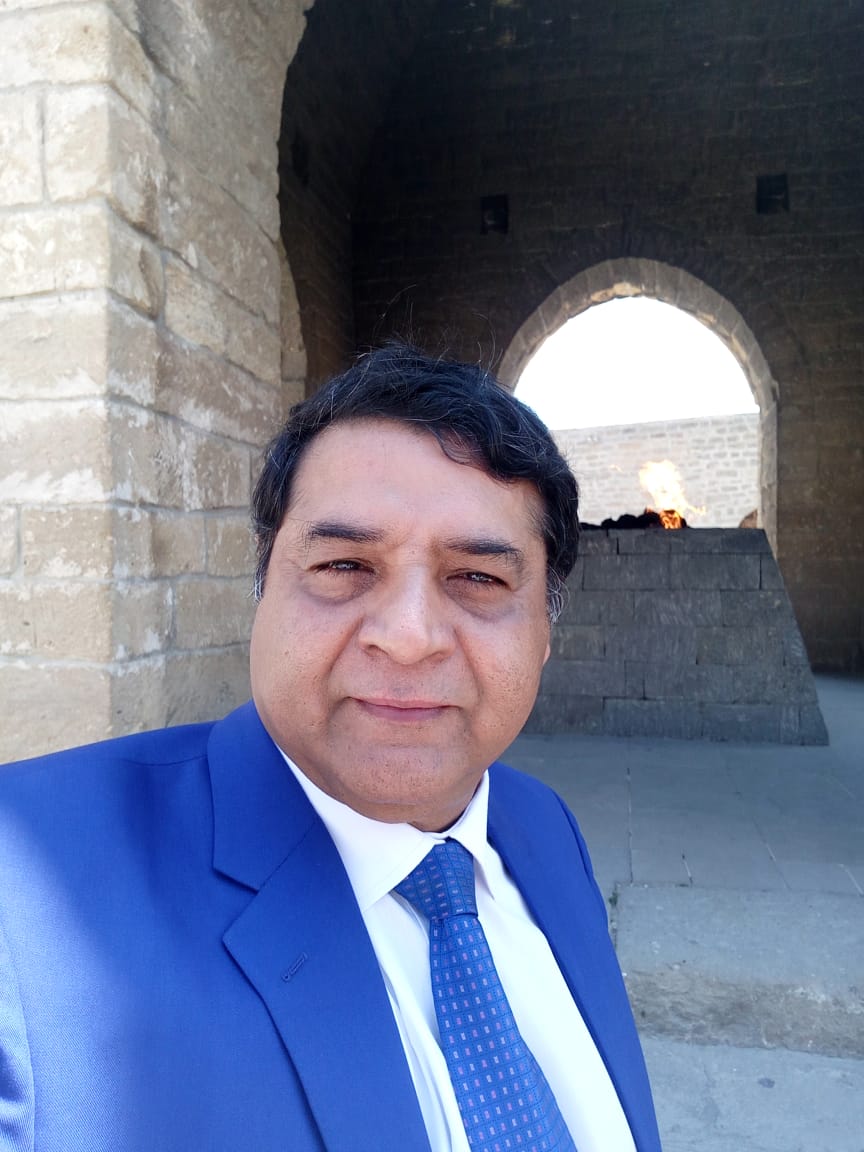
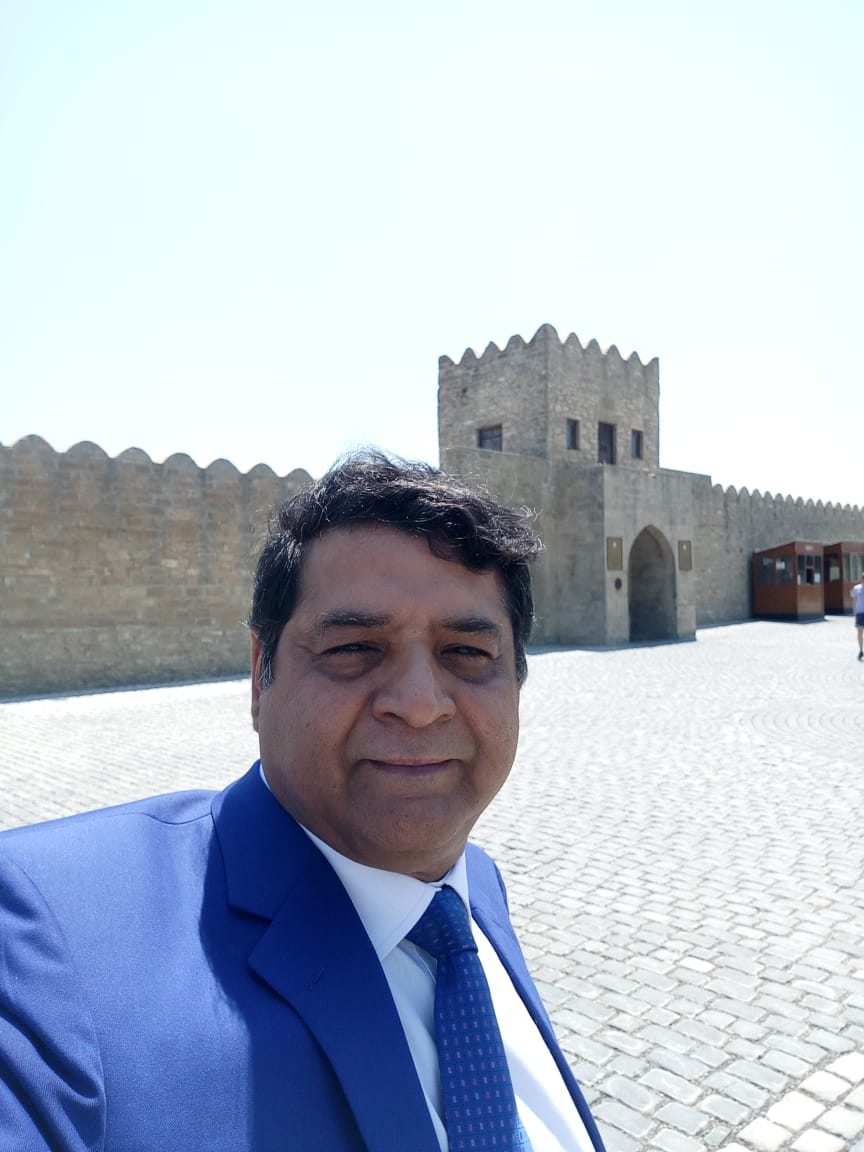
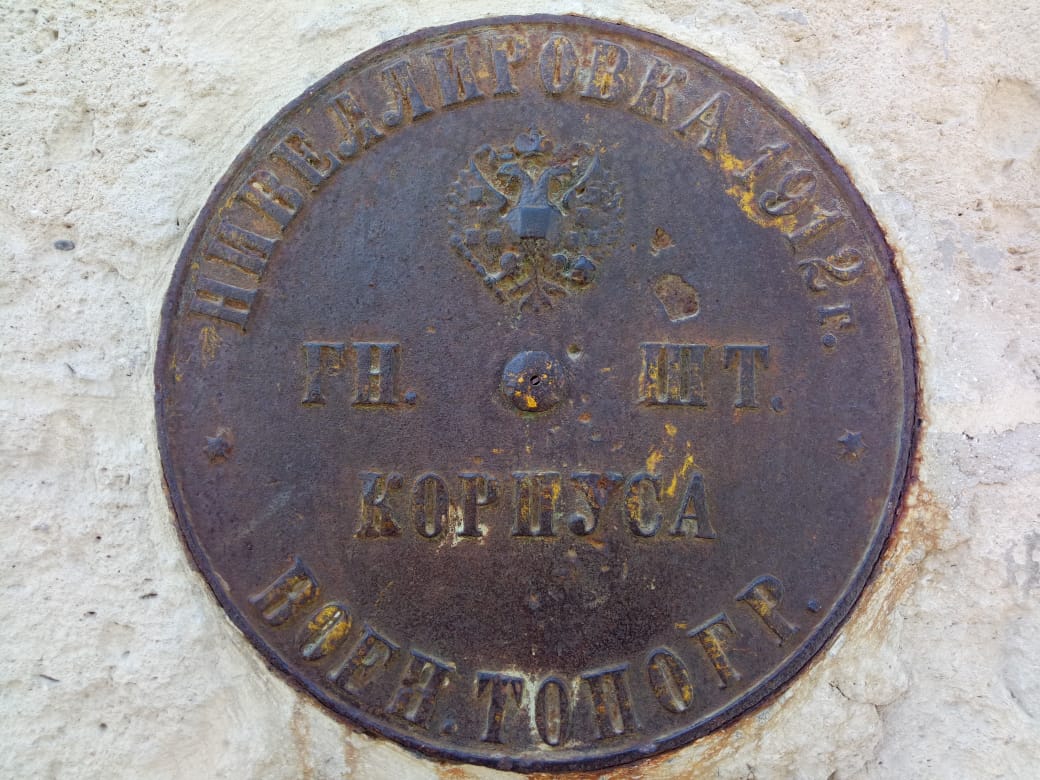
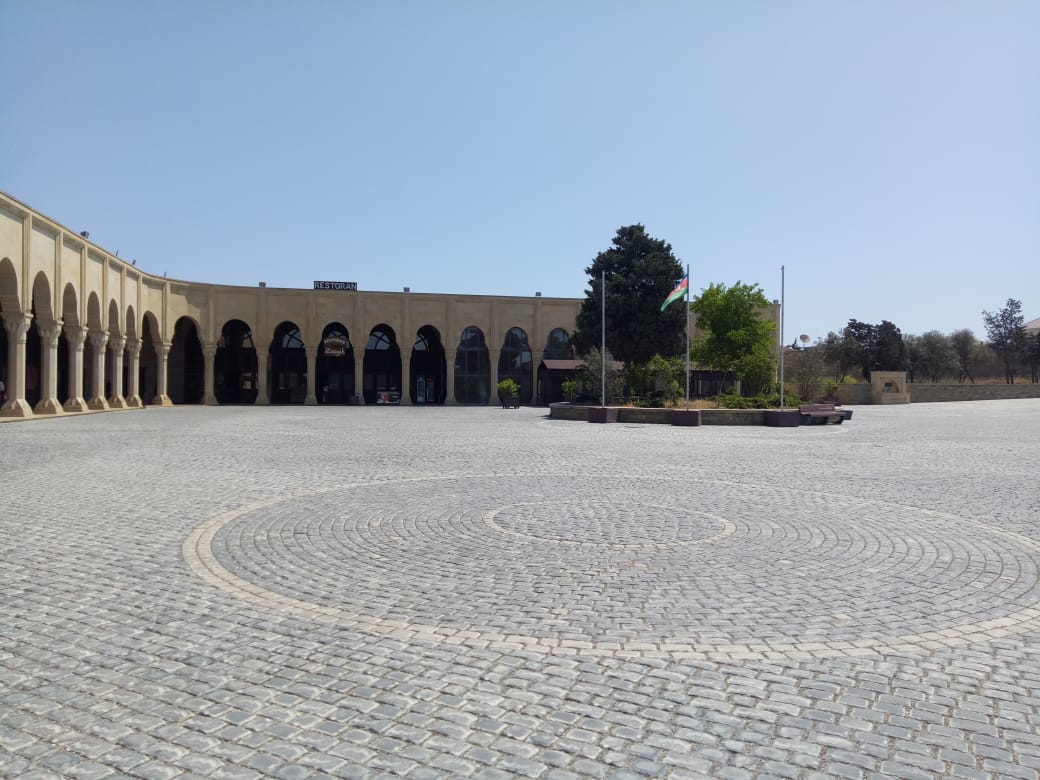
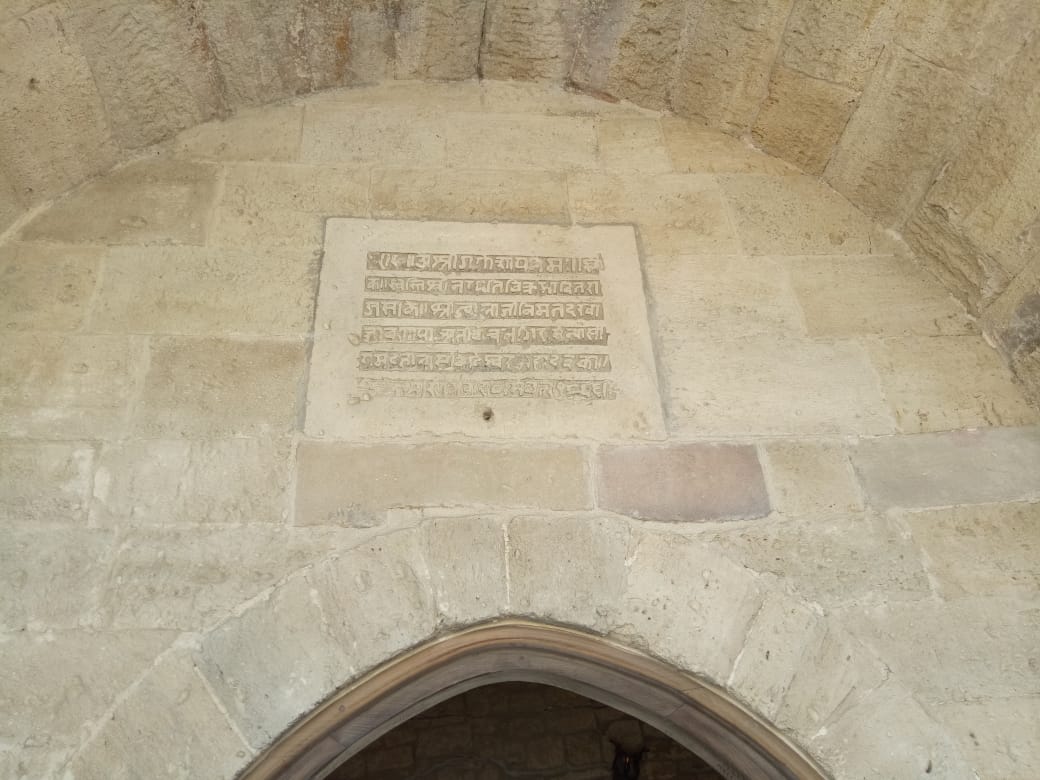
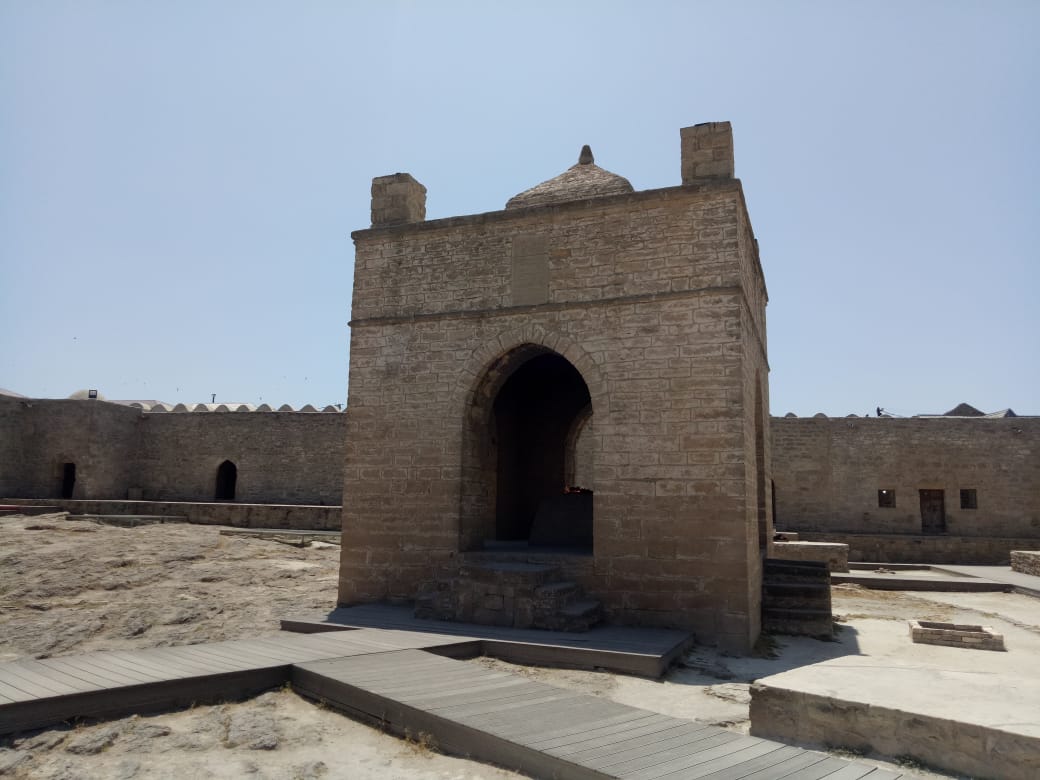
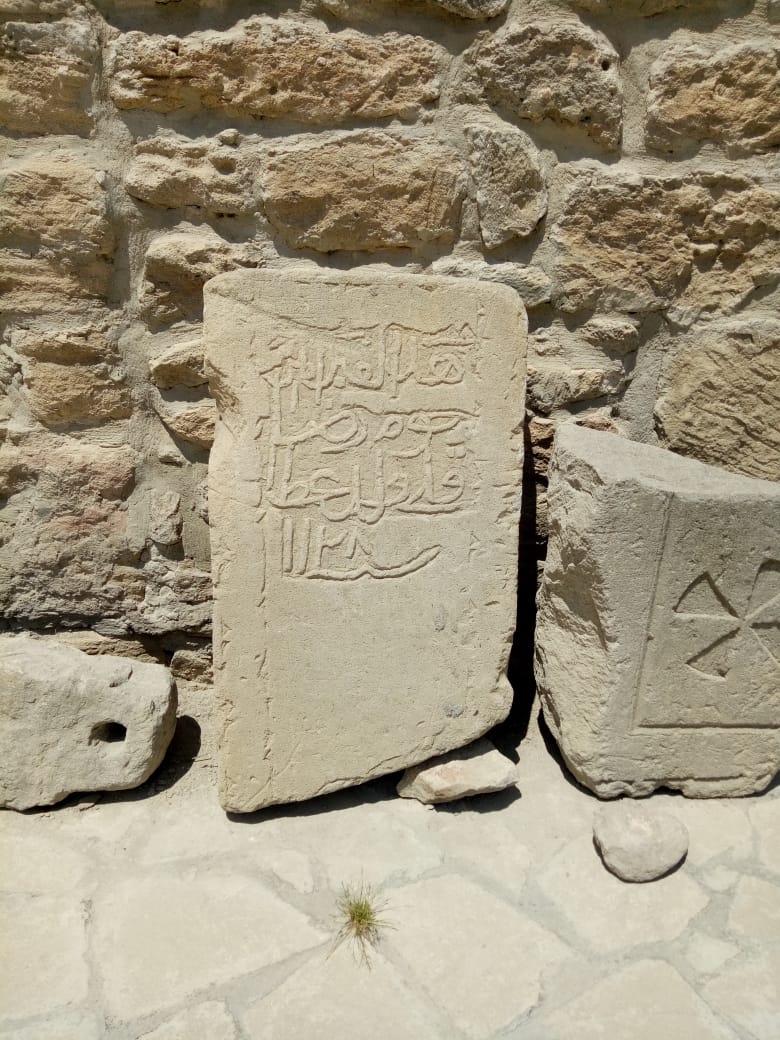
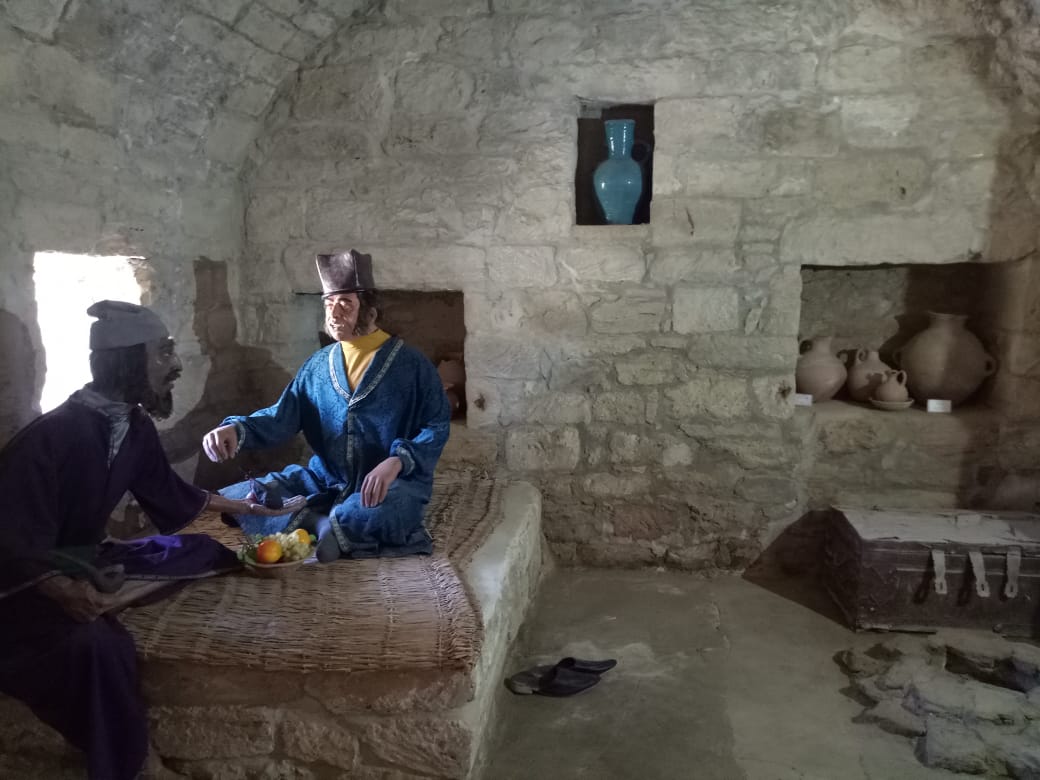
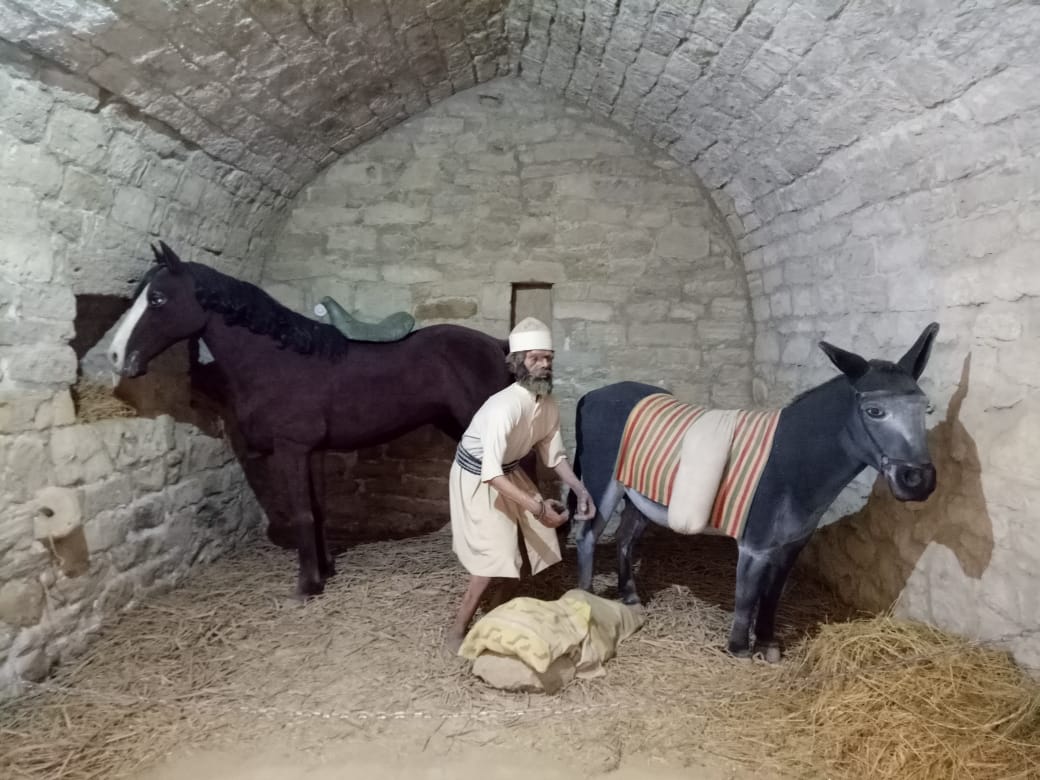
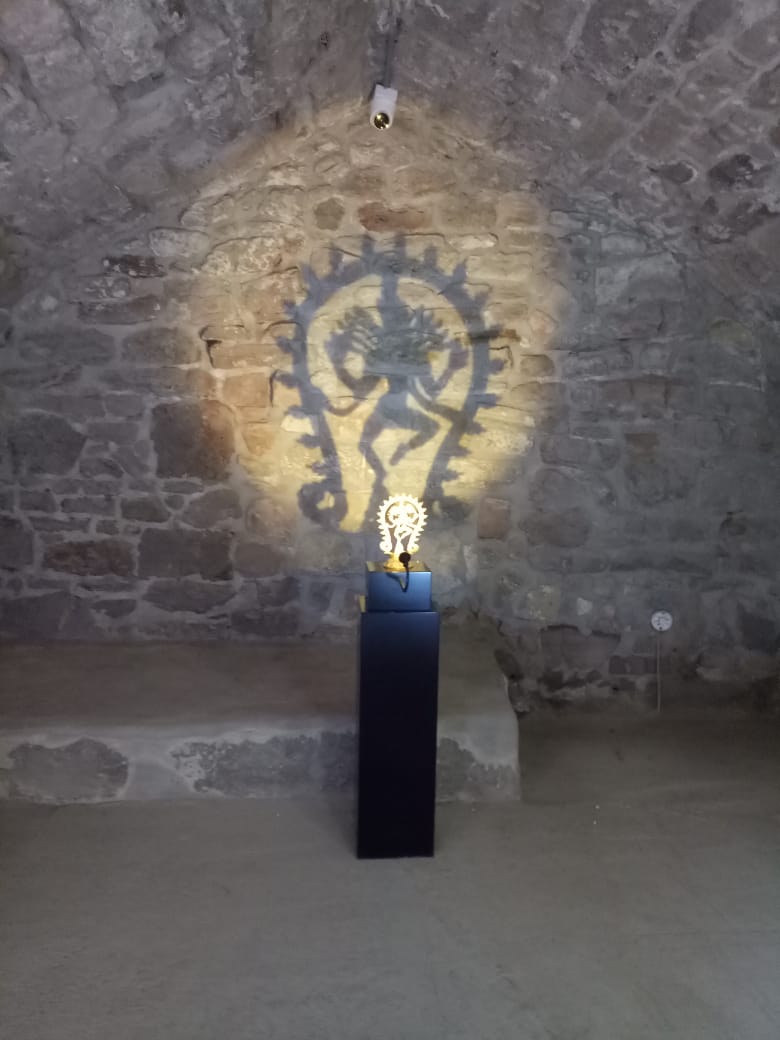

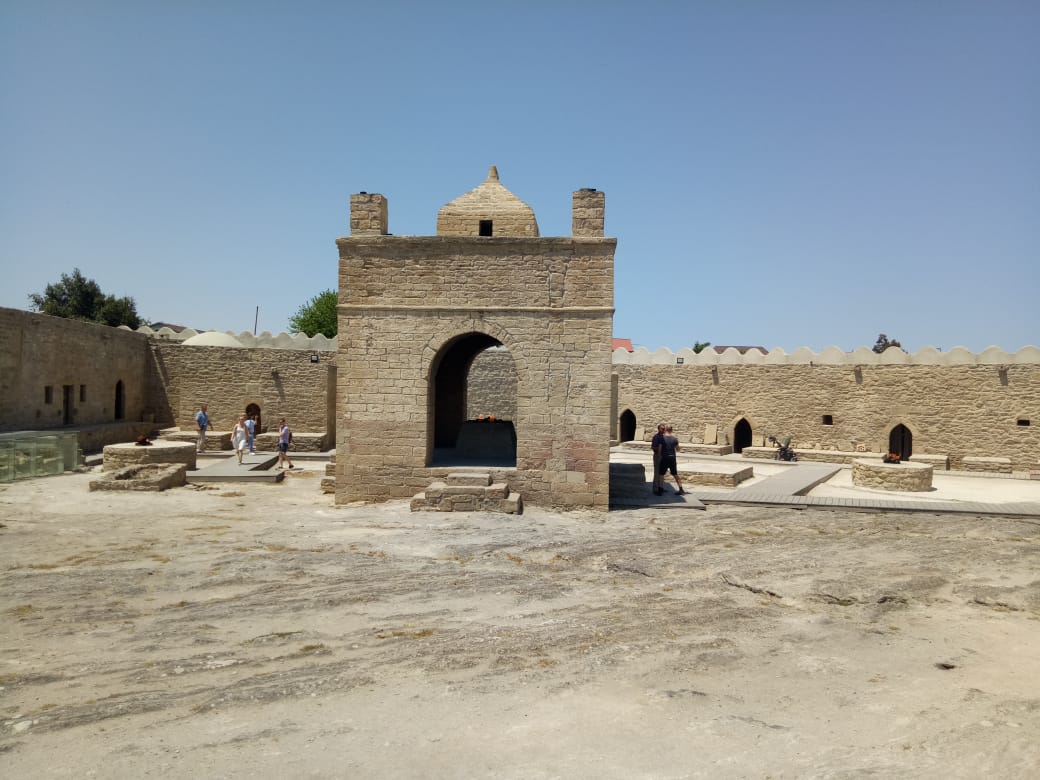
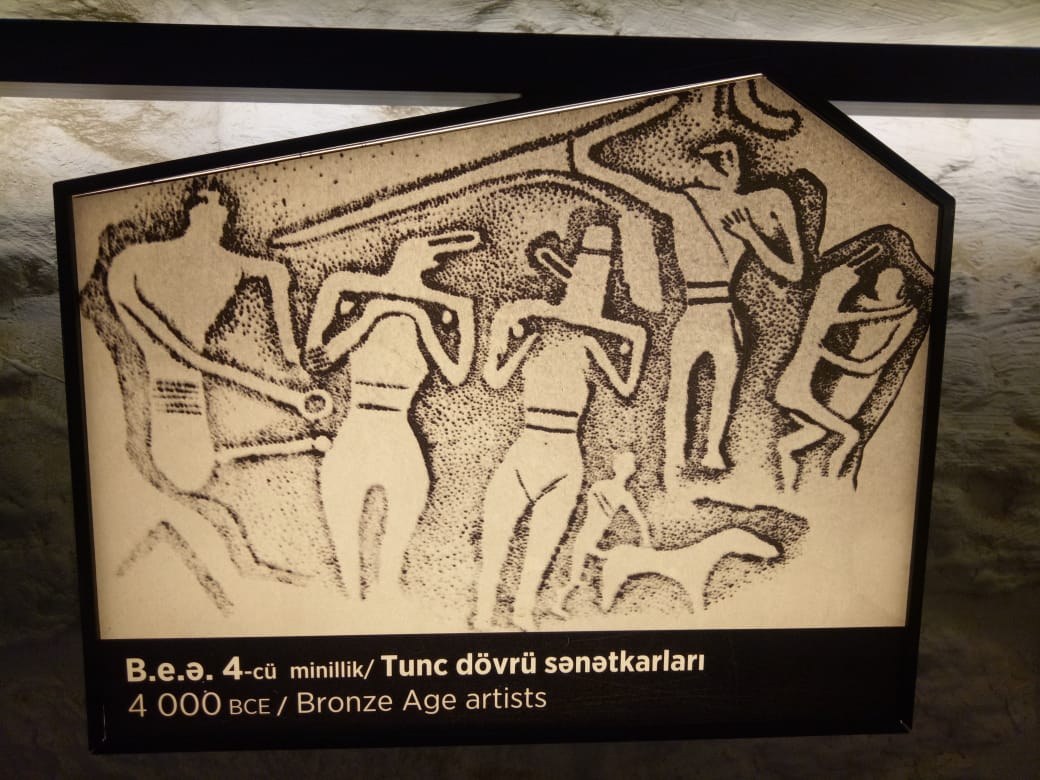

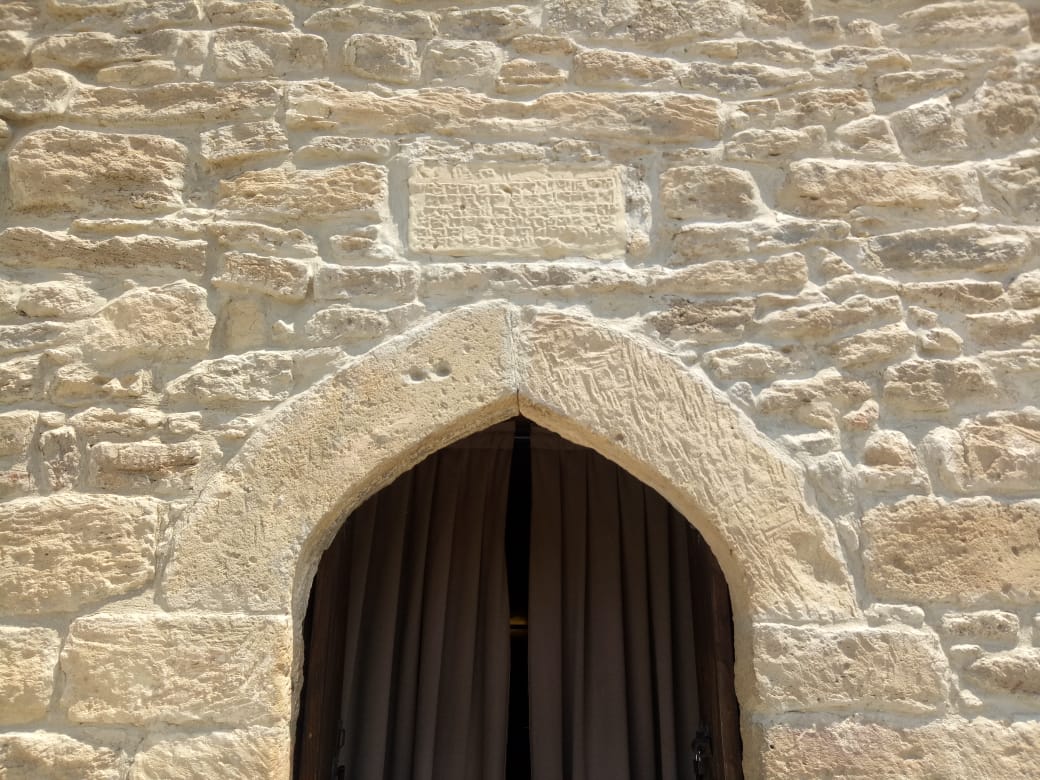
According to some historical papers, local people also worshipped at this site because of the ‘seven holes with burning flame’.” Fire is considered sacred in both Indo-Iranian branches of Hinduism and Zoroastrianism (as Agni and Atar respectively), and there has been debate on whether the Atashgah was originally a Hindu structure or a Zoroastrian one.
The trident mounted atop the structure is usually a distinctly Hindu sacred symbol (as the Trishula, which is commonly mounted on temples) and has been cited by Zoroastrian scholars as a specific reason for considering the Atashgah as a Hindu site.
However, an Azeri presentation on the history of Baku, which calls the shrine a “Hindu temple”, identifies the trident as a Zoroastrian symbol of “good thoughts, good words and good deeds”. One early European commentator, Jonas Hanway, bucketed Zoroastrians and Hindus together with respect to their religious beliefs: “These opinions, with a few alterations, are still maintained by some of the posterity of the ancient Indians and Persians, who are called Gebers or Gaurs, and are very zealous in preserving the religion of their ancestors; particularly in regard to their veneration for the element of fire”.
In Baku, Indian merchants from the Multan region of Punjab controlled much of the commercial economy. Much of the woodwork for ships on the Caspian was also done by Indian craftsmen. Some commentators have theorized that Baku’s Indian community may have been responsible for the construction or renovation of the Aatishgah.
“The Ateshgyakh Temple looks not unlike a regular town caravansary – a kind of inn with a large central court, where caravans stopped for the night. As distinct from caravansaries, however, the temple has the altar in its center with tiny cells for the temple’s attendants – Indian ascetics who devoted themselves to the cult of fire – and for pilgrims lining the walls.”
The inscriptions in the temple in Sanskrit (in Nagari Devanagari script) and Punjabi (in Gurmukhi script) identify the site as a place of Hindu and Sikh worship, and state it was built and consecrated for Jwala Ji, the modern Hindu fire deity.
The temple was examined in the late 19th and early 20th century by Parsi dasturs, some of whom had also visited the Jwala Ji at Kangra in the Himalayas. Based on the inscriptions and the structure, their assessment was that the temple was a Hindu and Sikh shrine. In 1925, a Zoroastrian priest and academic Jivanji Jamshedji Modi traveled to Baku to determine if the temple had indeed been once a Zoroastrian place of worship.
Besides the physical evidence indicating that the complex was a Hindu place of worship, the existing structural features are not consistent with those for any other Zoroastrian or Sikh places of worship (for instance, cells for ascetics, fireplace open to all sides, ossuary pit and no water source.
If you plane to visit Baku, do not miss to visit this bridge which links Pakistan with Azerbaijan through Temple of Fire—constructed by Multani Hindus and Multani Caravanserai.
